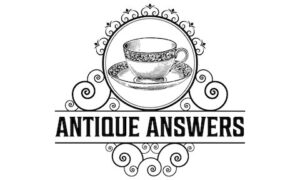Uranium glass is a unique man-made kind of glass that has enough uranium in it to cause it to be considered radioactive. When the uranium is mixed with different chemicals, it turns different the glass different colors such as pink, black, bright blue, emerald green, or a sickly yellow.
Uranium glass can be many different colors, and each color has a different name, such as jade glass or vaseline glass, but to make sure it’s true uranium glass, it needs to be put under a UV light. This bright, neon green glow is the common denominator between the different colors of uranium glass.
Antique hunters of uranium glass would be able to tell you all the different kinds of uranium glass and which chemicals cause different colors, and as fascinating as it would be to listen for hours about the history and chemical makeup of different kinds of glass, the crash course below will be much quicker and easier to digest.
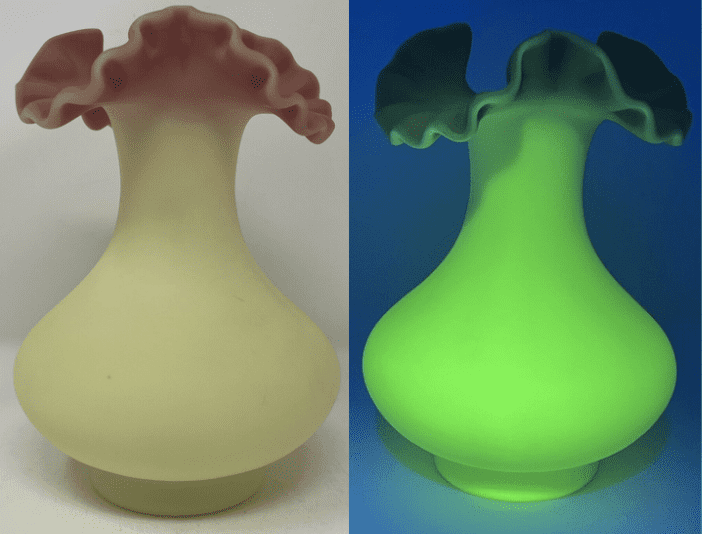
Brief History
Uranium glass was first marketed in England, but the craze for the fluorescent glass soon spread to other parts of Europe and the United States. It was produced in the United States by almost every big glass and dishware company until about 1940 when the majority of the uranium in the US was confiscated by the US government to use for the Manhattan Project. Up to that point, the uranium that was used in the glass was raw uranium that had not been chemically processed or changed.
In 1972, when companies could start using uranium again, the chemical structure of the uranium was slightly different, and since then, companies have used different chemicals to achieve the same outward appearance as the original uranium glass. The only difference would be the lack of that radioactive glow under a black light, since the dishes and glass don’t contain any radionuclides.
Antique hunters love to find uranium glass made before the 1940s since those dishes could contain up to 25% of their weight in uranium. These dishes are rare to find and expensive to purchase, but for some, to hold that little piece of radioactive history and show it off to their friends, the price is a small one to pay.
What Colors Does Uranium Glass Come In?
Is all uranium glass green?
Uranium glass doesn’t have to just be green. It comes in many different colors as well! Because uranium glass comes in so many colors, it is often differentiated by different names for different colors. Jade-green uranium glass is also called Jadeite glass.
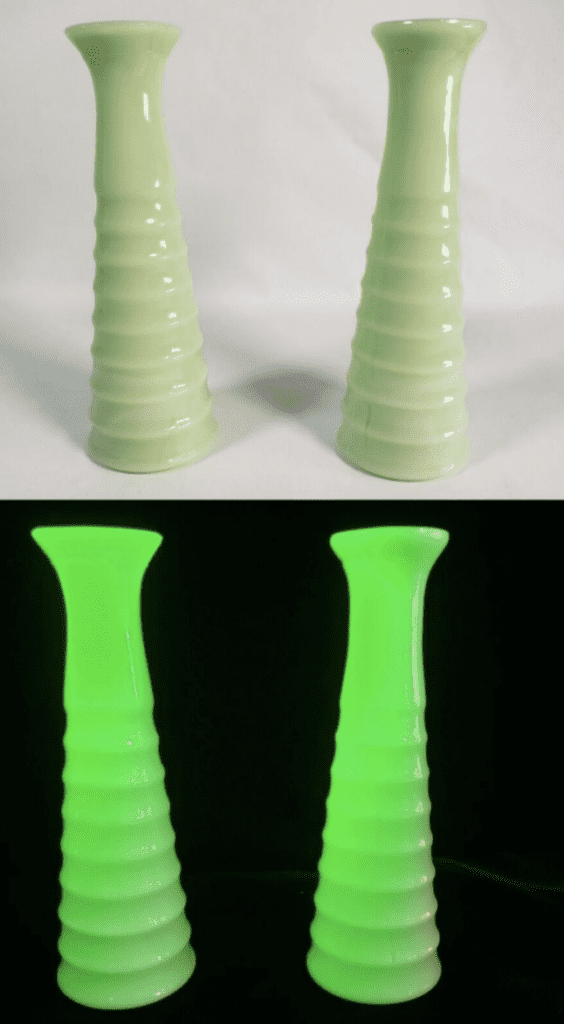
Yellow uranium glass is called vaseline glass, because of it’s similarity in color to the petroleum jelly. Vaseline glass
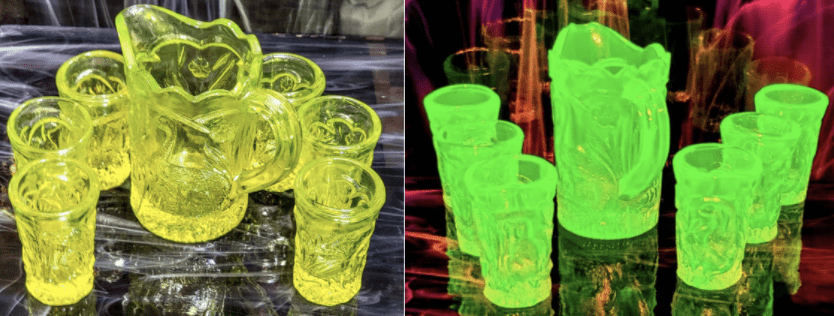
Custard glass that is uranium glass is opaque milky white with a slight yellow tint.
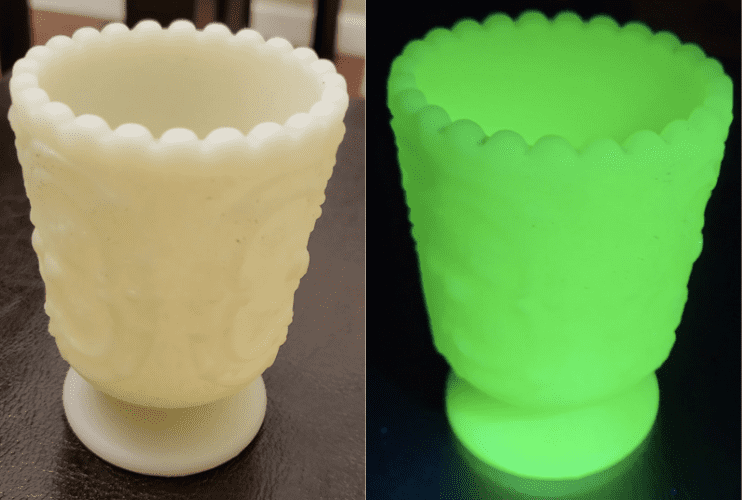
Burmese glass is also yellow but turns into a beautiful salmon pink when exposed to heat, creating an ombre effect.
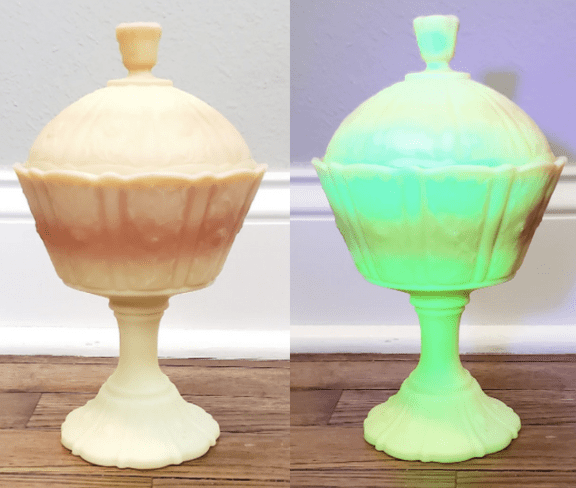
Another specific kind of uranium glass is called depression glass, named after the Great Depression. Depression glass comes in all sorts of colors, such as pink, blue, yellow, and green. And some green depression glass can also be considered uranium glass.
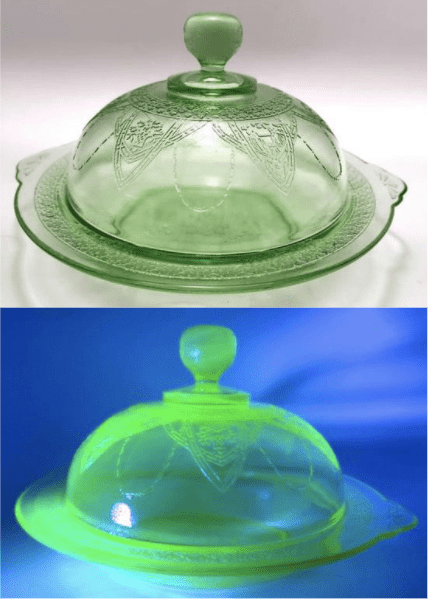
What color does uranium glass glow?
No matter the color of the uranium glass, all uranium glass will glow neon green under UV light. This is what sets it apart from other glassware.
Let’s talk about these different uranium glasses and their colors.
Jadeite Glass
As one might have guessed, the name for jadeite glass comes from its bright jade green color. This glass looks like it’s glowing even when it’s not under a UV light, which is especially exciting for those history nerds who know that a piece of glass with that color could only be produced before 1943. Three main companies in the United States produced jadeite glass: McKee, Jeanette, and Anchor Hocking.
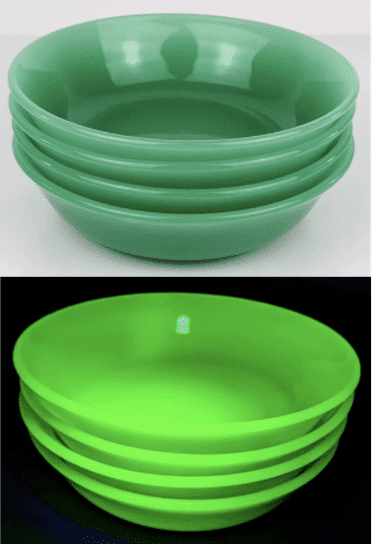
Anchor Hocking produced their jadeite glass from 1945 to 1976, meaning that this kind did not contain uranium but held other chemicals that gave it its distinctive color. Although these newer dishes have a beautiful color and are highly collectible, they are not real uranium glass and will not glow under UV light.
Many antique collectors consider dishes from these three brands to be the only real jadeite glass in the United States, although many companies have started to make copycat dishes.
Vaseline and Custard Glass
Vaseline glass is a kind of uranium glass that has a yellow to yellow-green color but also glows green under a black light. This kind of glass was very popular during the Great Depression and would often be included in cereal boxes as a little pick-me-up from the company during the rough days of the depression.
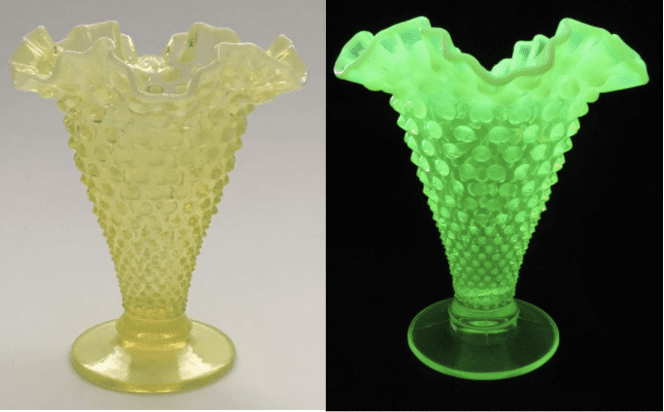
Don’t confuse Vaseline glass with custard glass, which is opaque, whereas vaseline glass is transparent. Custard glass is generally a milky white to light yellow color.
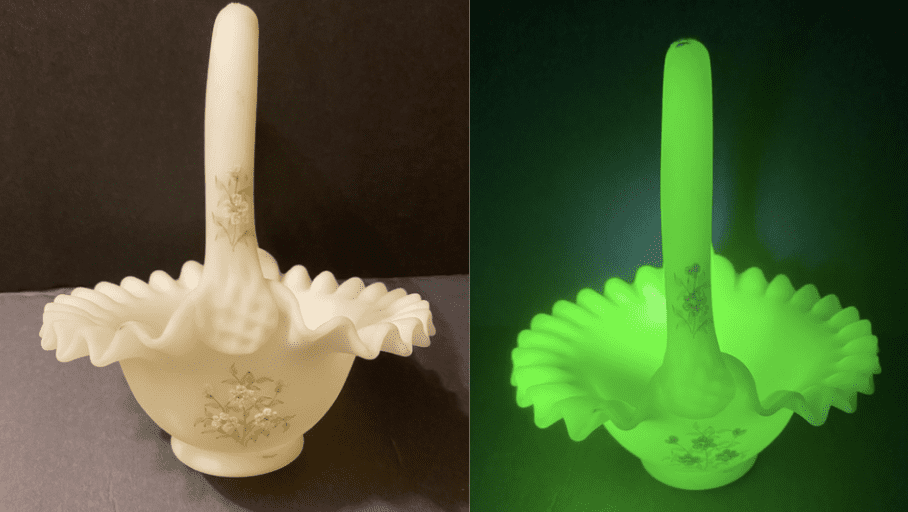
Depression Glass
Depression glass was named for its popularity during the Great Depression. It looked like fancy dinnerware but it was sold at a fraction of the cost.
Depression glass was produced in almost every color-pink, yellow, green, and even blue! However, the most commonly known color of depression glass is transparent light green. Most green depression glass contained at least small amounts of uranium, and therefore glows under a blacklight.
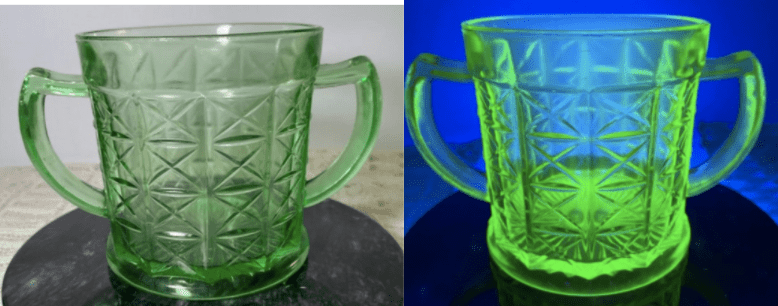
There were over 20 companies that produced depression glass throughout the years of the great depression, and there were many different styles and patterns that distinguished them from each other. Some of the best-selling patterns included:
- American Sweetheart (1930-1936), produced by the MacBeth Evans Glass Company.
- Cameo (1930-1934), produced by the Anchor Hocking Glass Company.
- Princess (1931-1934), produced by the Anchor Hocking Glass Company.
- Mayfair (1931-1937), produced by the Anchor Hocking Glass Company.
- Royal Lace (1934-1941), produced by the Hazel-Atlas Glass Company and was arguably the most popular style of depression glass.
Burmese Glass
Burmese glass is slightly different from the other kinds of uranium glass both because of its history and because of the technique used to get its color. Burmese glass is mixed with gold and uranium oxide to get a pale yellow color that fades into a salmon pink color when exposed to heat. When exposed to heat again, the pink color will fade back to pale yellow. This ombre effect was extremely popular during the victorian era and the technique was patented early on by a US company.

The US company Mount Washington patented Burmese glass as early as 1885 and gave permission to a company based in the UK to use their recipe in 1986. The glass sold well in England as it was marketed as “Queens Burmese Ware”. These two companies are the only official makers of Burmese glass in the world, and authentic old pieces made by them are hard to come by.
